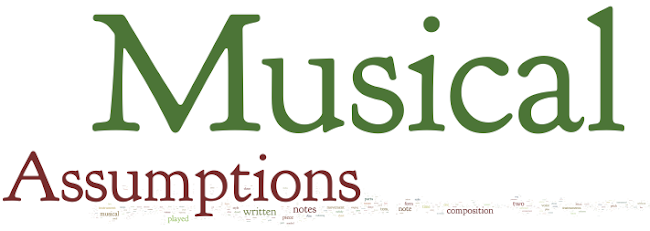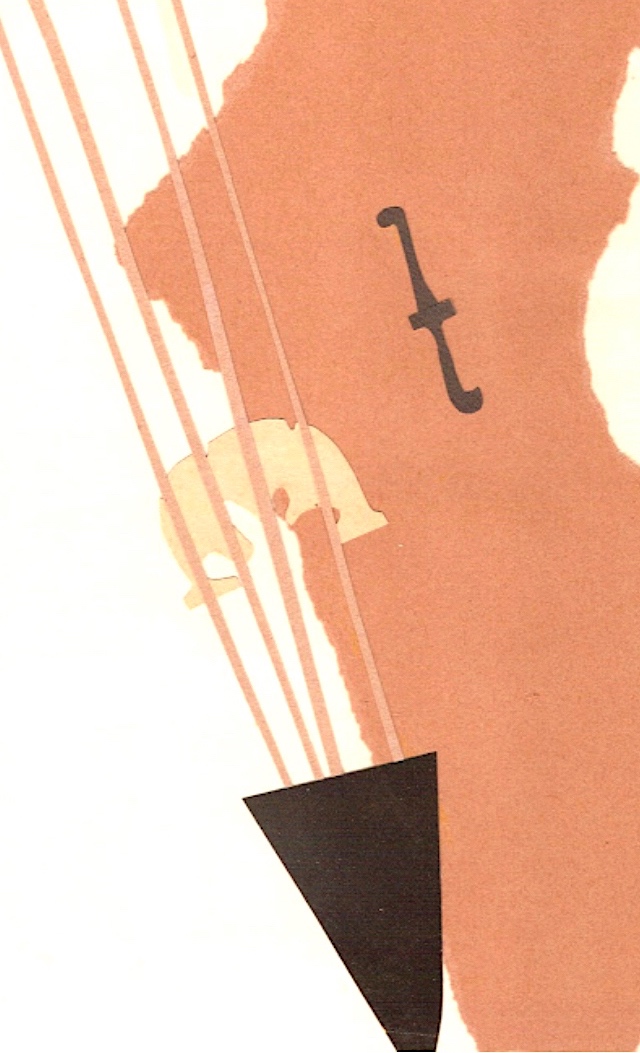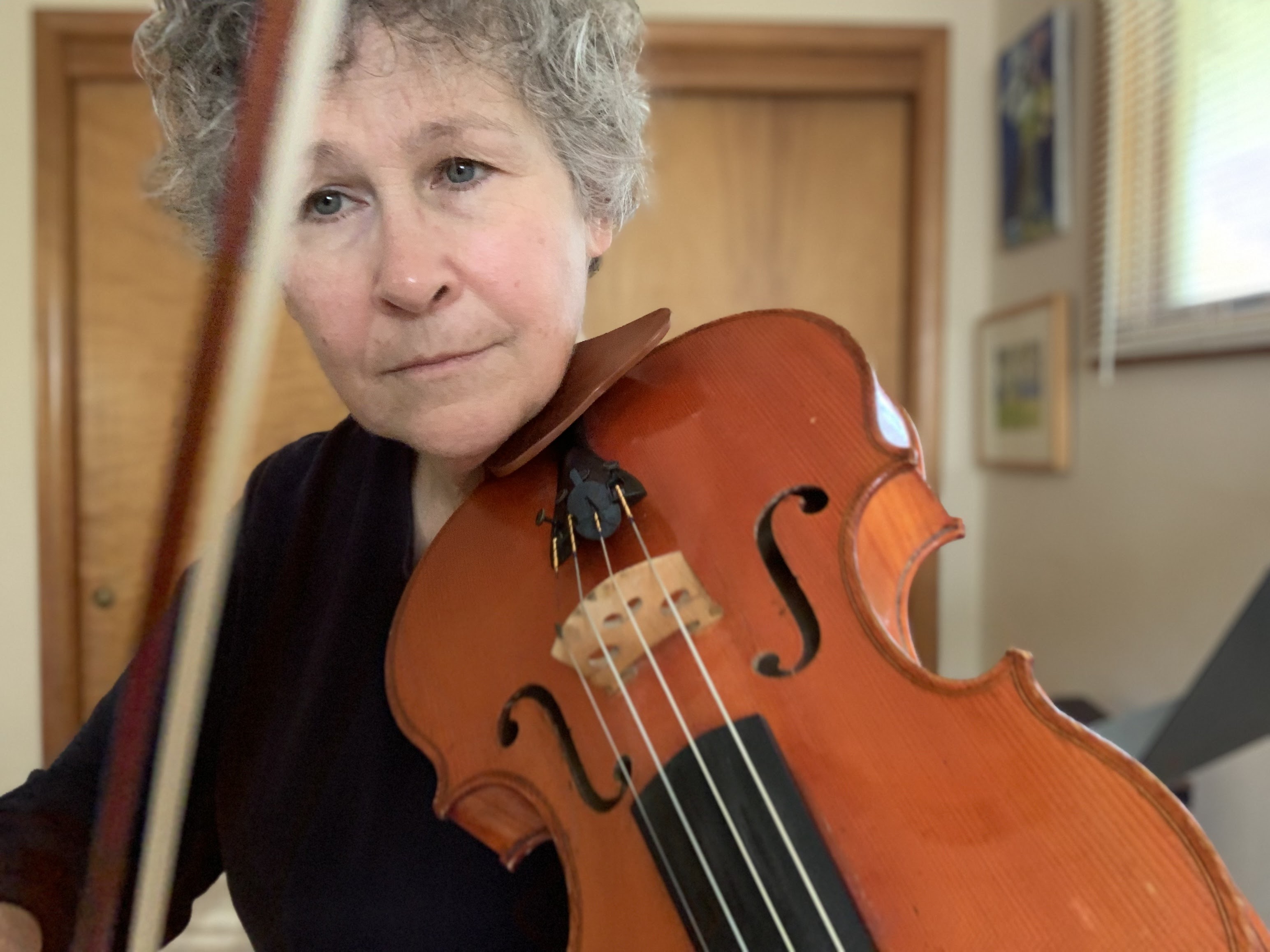An article in Slate lets us know that yesterday that a live a Metropolitan Opera performance of Mozart's Don Giovanni aired on movie screens across the country. There's a repeat movie theater broadcast on Wednesday at 6:30 Eastern Time.
The similarities between the two Dons abound. The Met is making an excellent statement by broadcasting this opera at precisely this time.
Sunday, October 23, 2016
Saturday, October 22, 2016
Finally! A Composition Contest I Can Enter
[You'll have to click the image to read the text without glasses.]
Thank you Michael Kurek for creating the above piece of art for this fine contest.
Thank you Michael Kurek for creating the above piece of art for this fine contest.
Sunday, October 16, 2016
Trio for Clarinet (Violin), Viola, and Piano
Thank you to the members of the Nexus 3 Trio for this excellent performance!
You can find the music here.
You can find the music here.
Thursday, October 13, 2016
Monday, October 10, 2016
Preparing to Inhale
Three of my violin students happen to also play the flute. I consider it tremendous fortune to be able to teach them because I find myself identifying all sorts of "flute brain" things that happen that can hamper good violin playing. And then sometimes a violin-based observation can identify a flute problem.
For instance, one student has the habit of picking up all of her fingers when she lifts her bow. My sense of flute reflex (which has been activated of late because I have been practicing the flute every day) made me think of the way I tend to lift my fingers off the flute keys when I take a breath. She told me that she does the same thing when playing the flute.
While practicing the flute the other day, I noticed how often I pick up my fingers when I take a breath, and how much better everything sounds and feels when I keep my fingers on the keys while taking in air. Perhaps the process of inhalation is more complete without lifting the fingers because the only muscles that are working are the ones that control breathing, so all the energy goes to the task at hand.
I'm excited to talk about this with my recorder student (who will be here soon).
For instance, one student has the habit of picking up all of her fingers when she lifts her bow. My sense of flute reflex (which has been activated of late because I have been practicing the flute every day) made me think of the way I tend to lift my fingers off the flute keys when I take a breath. She told me that she does the same thing when playing the flute.
While practicing the flute the other day, I noticed how often I pick up my fingers when I take a breath, and how much better everything sounds and feels when I keep my fingers on the keys while taking in air. Perhaps the process of inhalation is more complete without lifting the fingers because the only muscles that are working are the ones that control breathing, so all the energy goes to the task at hand.
I'm excited to talk about this with my recorder student (who will be here soon).
Saturday, October 08, 2016
Waiting to Exhale (or Blow, or Bow, or Move the Air)
We had a discussion about air during yesterday's Renaissance consort meeting. A new person to the group, a professional oboe player in civilian life, mentioned that she felt out of breath playing the alto recorder, to which two members replied that their shawm teacher tells them not to "blow," but rather to "exhale" through the instrument.
My thoughts waited a day or so before they collected themselves, so I'll share my observations here.
When I play the recorder or the flute I think about using the tongue to move the air through the instrument and out into the world. Exhaling is too passive for me, and blowing without using the tongue to move the airstream feels like a waste of air. I find that exhaling by itself lacks purpose and direction, because it doesn't take the all-important tongue into consideration. I always use the tongue to push the air, and then I use it to move the air stream through the instrument. A certain amount of "blowing" does happen, but it only happens once the air column has been set into motion.
When I play viola or violin I begin my bow stroke with a combination of right-hand fingers and wrist. I find that they function together much like a tongue functions when playing the flute or the recorder. Then I use a combination of my fingers, hand, wrist, arm, and shoulder to move the bow and regulate its speed and pressure. The movement starts (or keeps) the string vibrating, which in turn sets the wood and the air inside the instrument into motion. When I move the bow, I push or pull the air (up bow is the same as push and down bow is the same as pull) out of the instrument. It's nothing like blowing, though once the bow is in motion, it feels a little like exhaling. It particularly feels like exhaling when I actually exhale while moving the bow.
We inhale and exhale while playing a stringed instrument (because we can, and because we have to in order to live). It feels both life-enhancing and music-enhancing. The act of inhaling and exhaling when playing strings does not make sound or prepare to make sound. What happens inside the body (what you cannot see) has little bearing on the way notes are produced. When playing a wind instrument the outside of the body (the part that you can see) remains relatively still. Physical movement (aside from the fingers, the breathing mechanism, and the occasional combination of lip and cheek) is superfluous; it does nothing to improve sound quality or musical expression.
My thoughts waited a day or so before they collected themselves, so I'll share my observations here.
When I play the recorder or the flute I think about using the tongue to move the air through the instrument and out into the world. Exhaling is too passive for me, and blowing without using the tongue to move the airstream feels like a waste of air. I find that exhaling by itself lacks purpose and direction, because it doesn't take the all-important tongue into consideration. I always use the tongue to push the air, and then I use it to move the air stream through the instrument. A certain amount of "blowing" does happen, but it only happens once the air column has been set into motion.
When I play viola or violin I begin my bow stroke with a combination of right-hand fingers and wrist. I find that they function together much like a tongue functions when playing the flute or the recorder. Then I use a combination of my fingers, hand, wrist, arm, and shoulder to move the bow and regulate its speed and pressure. The movement starts (or keeps) the string vibrating, which in turn sets the wood and the air inside the instrument into motion. When I move the bow, I push or pull the air (up bow is the same as push and down bow is the same as pull) out of the instrument. It's nothing like blowing, though once the bow is in motion, it feels a little like exhaling. It particularly feels like exhaling when I actually exhale while moving the bow.
We inhale and exhale while playing a stringed instrument (because we can, and because we have to in order to live). It feels both life-enhancing and music-enhancing. The act of inhaling and exhaling when playing strings does not make sound or prepare to make sound. What happens inside the body (what you cannot see) has little bearing on the way notes are produced. When playing a wind instrument the outside of the body (the part that you can see) remains relatively still. Physical movement (aside from the fingers, the breathing mechanism, and the occasional combination of lip and cheek) is superfluous; it does nothing to improve sound quality or musical expression.
Subscribe to:
Posts (Atom)





